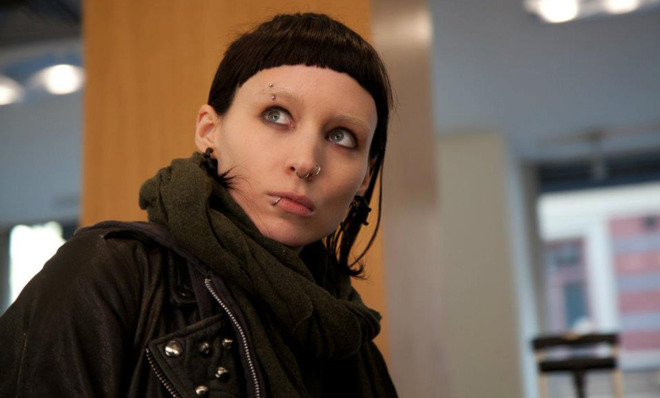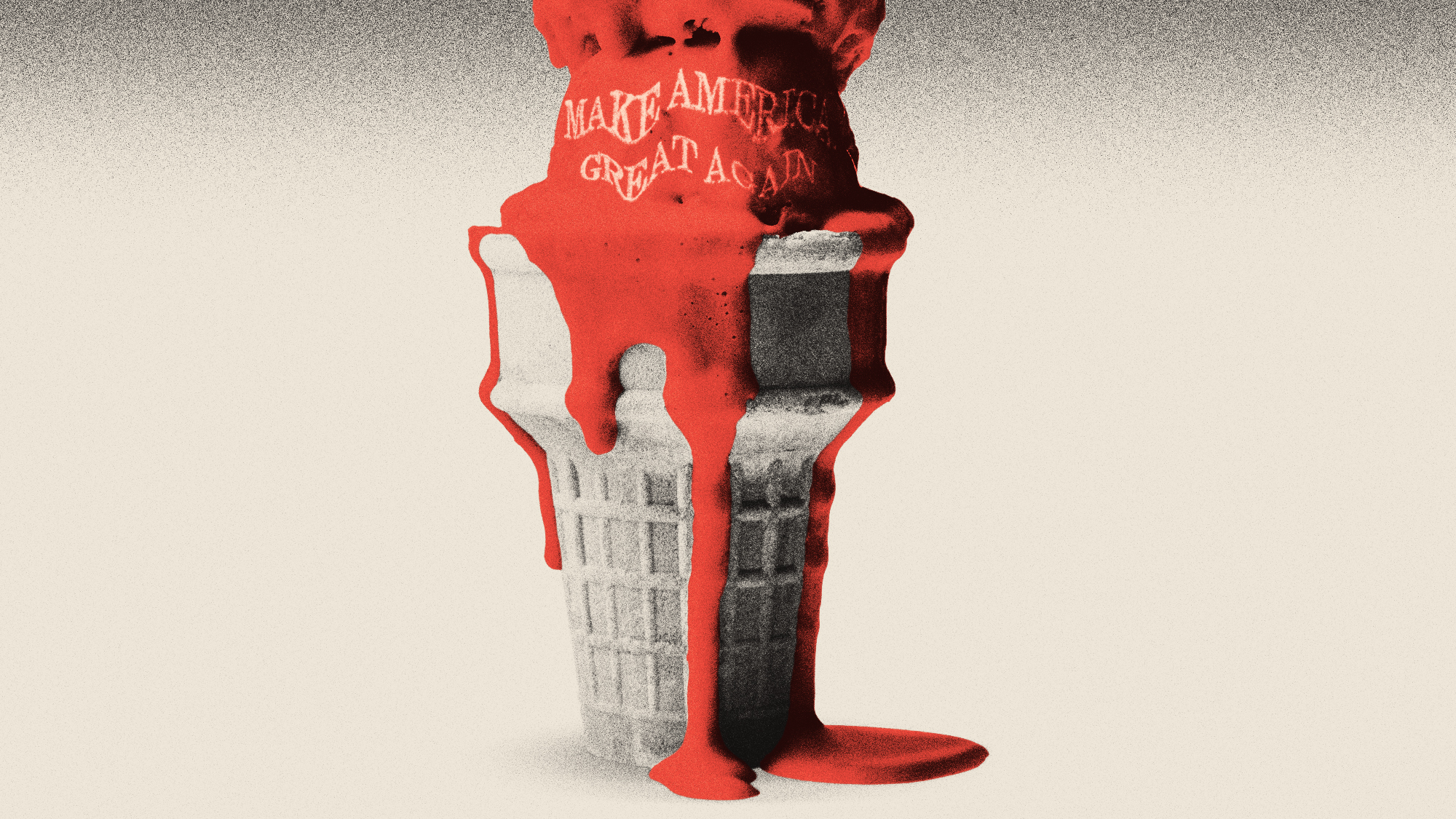5 years of Girls on Film
On this column's five-year anniversary, a look at the ongoing evolution of femme-centric film in culture and Hollywood


Five years ago, Girls on Film kicked off as a quick, biweekly column looking at Hollywood's ongoing gender problem. At the time, the topic was barely discussed outside of personal blogs and occasional statistical news pieces. Five years later, it feels like a different world — one that provides an interesting microcosm of how much things can change, and how much they stay the same.
Back when I started, Hollywood was coming off a year where men ruled the box office. 2008's highest-grossing movies were full of superheroes (The Dark Knight, Iron Man, Hancock), adventurous men (Indiana Jones and the Kingdom of the Crystal Skull, Quantum of Solace), and children's films (Wall-E, Kung-Fu Panda, Madagascar: Escape 2 Africa, Horton Hears a Who!). Only the power of the Twi-hards could penetrate the bubble and give the list its only femme-centric film: Twilight.
In the words of Manohla Dargis, Hollywood was convinced that we had entered "new, post-female American cinema." Sex and the City had almost cracked the the Top Ten, but Nia Vardalos was told by a studio executive that the success of the film was a "fluke" and that "women don't go to the movies." The MPAA didn't publish gender breakdowns in their annual 2008 report of Theatrical Stats, but they proved the exec wrong when 2009's numbers were released: 52 percent of moviegoers were women.
The Week
Escape your echo chamber. Get the facts behind the news, plus analysis from multiple perspectives.

Sign up for The Week's Free Newsletters
From our morning news briefing to a weekly Good News Newsletter, get the best of The Week delivered directly to your inbox.
From our morning news briefing to a weekly Good News Newsletter, get the best of The Week delivered directly to your inbox.
Fortunately, changes were already in the works — but this was a time before comediennes began to reclaim cinematic comedy, before Kathryn Bigelow had become the first woman to win the Best Director Oscar, and before Frozen became the top-grossing animated film in history.
Today, we're coming off a year in which the top grossing film of 2013 wasn't a superhero film; it was The Hunger Games: Catching Fire, a girl-centric franchise with YA roots that successfully broke into the mainstream. The top ten highest grossing films includes Frozen, which flipped Disney's image-making princess storyline on its head, and Gravity, an expensive space drama that rested almost solely on the shoulders of Sandra Bullock.
But some things haven't changed. This week, Writers Guild of America West released employment numbers that show that the share of female writers working in film has actually decreased since 2009, reaching a dismal 15 percent. According to the annual Celluloid Ceiling Report, it's even worse for female directors. It was already bad in 2008, when women made up only 9 percent of directors — a number that hadn't improved in 10 years. But unbelievably, the 2013 numbers reveal that the percentage has dropped even more, to an abysmal 6 percent. This is on top of the decrease in the number of female characters and equally balanced male/female casts, and Hollywood's ongoing four percent problem.
But the important question concerning Hollywood's imbalance is not whether good things are happening — they are — but whether each advancement inspires the developmental change necessary to make the numbers reflect the financial and creative strides being made in the industry. In 2014, people talk about the imbalance — but it will only matter if the powers that be start listening to the ever-rising voices of discontent.
A free daily email with the biggest news stories of the day – and the best features from TheWeek.com
Over the last five years, Girls on Film has followed the discourse through multiple homes and multiple changes, and watched Hollywood's gender war ebb and flow. Below, read five notable installments of the column from the past five years. For more, check out the column's new online library: The Girls on Film Archive — a collection of links and blurbs to every installment of the column, and the topics, films, and people covered over the last five years.
1. Faux Feminism in Sucker Punch (March 8, 2011)
"On paper, it seems like a potentially empowering story. Fantasy worlds are our young heroine's coping mechanism as she tries to find power and authority in a seemingly hopeless situation. (Snyder has said that it all came out of this idea of men forcing a woman to dance, and her going into a fantasy to cope.) As Baby Doll gives in to her captors, she finds a way to fight back. The film seems to speak to our troubled past when men would quell female power through disgustingly false medical conditions like "female hysteria," where women would be locked up for any perceived defiance. However, Baby Doll is not really fighting back, and every bit of so-called feminism or empowerment is nothing more than a misogynistic wolf in sheep's clothing."
2. Softening and Sexualizing Lisbeth Salander (December 22, 2011)
"There seems to be a relief that Mara's Salander is a more relatable person, that classic 'female' tropes like softness and vulnerability are visible. It speaks to society's overwhelming discomfort with the unclassifiable, whether it's a person's sexuality, a terrible people who does good things, or the motivations of a young woman who has been horrifically mistreated, mentally and physically, for decades."
3. A Guide to the Rise of Catwoman (July 26, 2012)
"Like many modern heroines, oppressive expectations were laid on her shoulders and Hathaway tackled them as if she was the real Catwoman. It begins the minute she enters the film, delivering Bruce Wayne his dinner, snooping and getting caught. In one brief moment, she morphs from meek, curious help to self-assured powerhouse. Catwoman's power is exemplified as much through Hathaway's slight mannerisms as it is through exposition and plot, and it's real, human authority. She isn't magically licked or hot-breathed back to life. Her power isn't some magical construct — it's the manifestation of her life and experience, just like Batman's."
4. How Pam Grier Revolutionized Cinema (June 14, 2013)
"Unlike today's black action heroines, the films relished the color of her skin, emphasizing her race instead of minimizing it. Grier's blackness is an essential element to her character: She's a heroine with a proud afro, not a relaxed wave. Foxy Brown even uses Grier's hair to show the heroine adapting to different worlds: As herself, she's the fierce woman with a gorgeous afro; when she goes undercover as a prostitute attempting to please her white madam Miss Katherine and white Johns, her hair is straightened into a bob or curls. Foxy's hair morphs as she jumps between two worlds — one in which she's herself, and one in which she's playing a woman designed to tantalize white folks. In these films, Grier's race is celebrated and accentuated; she's not just the sole black actress in a cast of white actors, but a black woman with a black community surrounding her."
5. How Frozen Killed Prince Charming (January 17, 2014)
"Frozen only vilifies the Prince Charming fantasy as it currently stands: The idea that Prince Charming can be recognized in a moment, and that true love can come from a single kiss on dead lips or a perfectly sized shoe. In Frozen, Kristoff is the one because he falls in love with the girl he's taken the time to know — for her attitude and resourcefulness, and for her spirit and candor. If Kristoff offers her passionate, respectful, and reciprocal love, how can Hans' villainous twist shame girls' fantasies? The fantasy remains, but in a more worthwhile form."
Girls on Film is a weekly column focusing on women and cinema. It can be found at TheWeek.com every Friday morning. And be sure to follow the Girls on Film Twitter feed for additional femme-con.
Monika Bartyzel is a freelance writer and creator of Girls on Film, a weekly look at femme-centric film news and concerns, now appearing at TheWeek.com. Her work has been published on sites including The Atlantic, Movies.com, Moviefone, Collider, and the now-defunct Cinematical, where she was a lead writer and assignment editor.
-
 Is MAGA melting down?
Is MAGA melting down?Today's Big Question Candace Owens, Tucker Carlson, Laura Loomer and more are feuding
-
 Kushner drops Trump hotel project in Serbia
Kushner drops Trump hotel project in SerbiaSpeed Read Affinity Partners pulled out of a deal to finance a Trump-branded development in Belgrade
-
 Son arrested over killing of Rob and Michele Reiner
Son arrested over killing of Rob and Michele ReinerSpeed Read Nick, the 32-year-old son of Hollywood director Rob Reiner, has been booked for the murder of his parents
